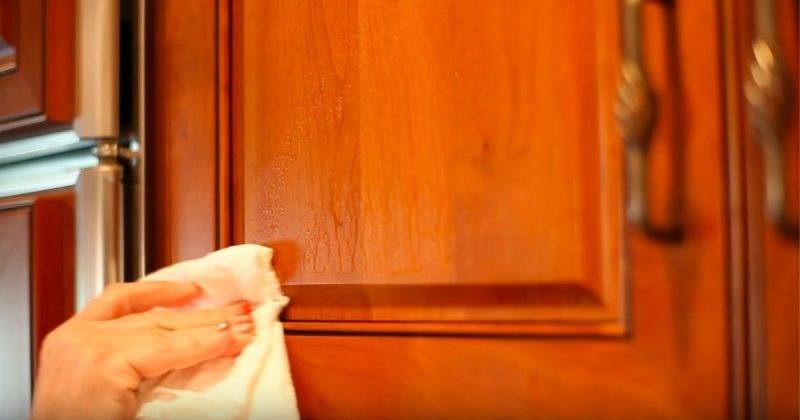ADVERTISEMENT
How to Remove Grease and Cooking Odors from Kitchen Cabinets
The kitchen is often the heart of the home, where delicious meals are prepared and memories are made. However, it’s also the place where grease and cooking odors can quickly build up, leaving your cabinets looking dull and smelling less than fresh. Over time, grease splatters from cooking oils, sauces, and food particles can accumulate on your kitchen cabinets, while persistent cooking smells can linger in the air and settle into surfaces. Fortunately, with a few simple techniques and the right cleaning tools, you can restore your cabinets to their pristine state and eliminate those unwanted odors. Here’s how to remove grease and cooking odors from your kitchen cabinets effectively.
Supplies You’ll Need:
- Dish soap or a degreaser
- White vinegar
- Baking soda
- Warm water
- Microfiber cloths
- Soft sponge or non-abrasive scrubbing pad
- Spray bottle (optional)
- Olive oil (optional for wood cabinets)
- Lemon (optional for fresh scent)
Step-by-Step Guide to Removing Grease from Kitchen Cabinets:
1. Empty and Protect the Cabinets
Before you begin cleaning, empty out the contents of your cabinets. This will give you better access to the surfaces and help avoid any accidental damage to your dishes or glassware. You may also want to place a drop cloth or towel under the cabinet area to catch any drips or cleaning solutions.
2. Prepare a Gentle Cleaning Solution
For most kitchen cabinets, you don’t need harsh chemicals. A simple homemade solution can do the trick. Mix warm water with a few drops of dish soap in a bucket or spray bottle. Dish soap is great at cutting through grease and grime without damaging surfaces. For particularly stubborn grease, add a splash of white vinegar to the solution. The acidity of vinegar helps to break down grease buildup.
3. Wipe Down the Cabinets
Use a microfiber cloth or soft sponge dipped in your cleaning solution to gently wipe down the surface of the cabinets. Start from the top and work your way down to prevent drips from spreading to areas you’ve already cleaned. Focus on areas that tend to collect grease the most, like near the stove or sink.
For wood cabinets, be sure to test the solution on a small, inconspicuous area first to ensure it won’t damage the finish. If you have painted cabinets, this solution should work well without causing harm.
4. Scrub Away Stubborn Grease
If grease remains after your initial wipe-down, you may need to scrub a bit harder. Use a non-abrasive scrubbing pad or a soft sponge to gently scrub away the residue. For extra cleaning power, make a paste from baking soda and water, then apply it to the greasy spots. Let it sit for a few minutes before gently scrubbing it off. Baking soda’s mild abrasiveness will help lift stubborn grease without damaging your cabinets.
5. Rinse and Dry
Once the grease is gone, it’s important to rinse away any cleaning solution to prevent residue from building up. Use a clean cloth dampened with plain water to wipe down the cabinets. Follow up by drying the surfaces with a dry microfiber cloth to avo
